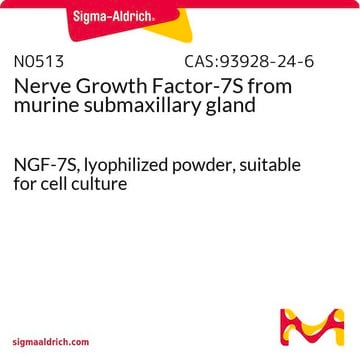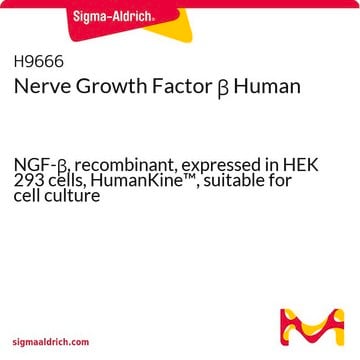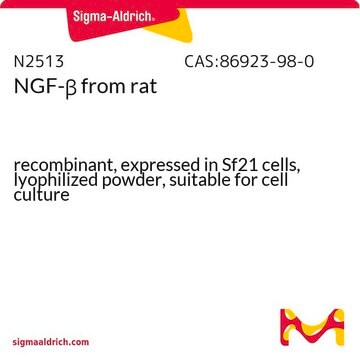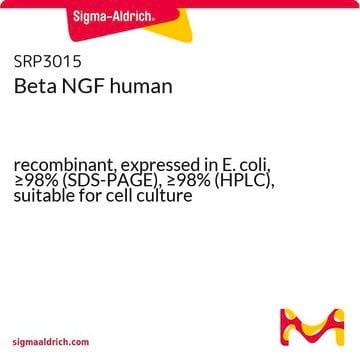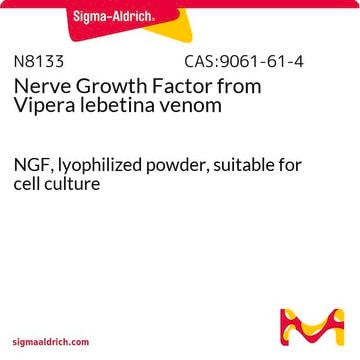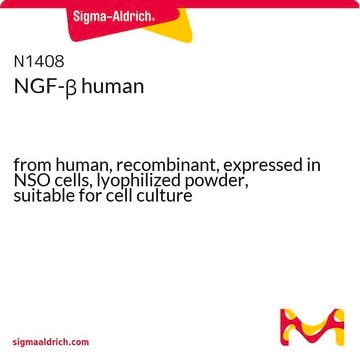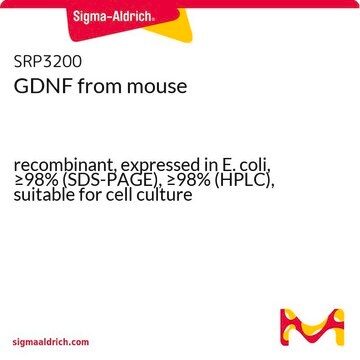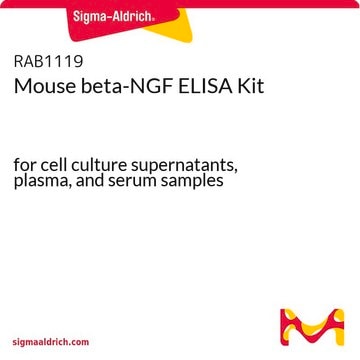Fontos dokumentumok
N6009
Nerve Growth Factor-2.5S from murine submaxillary gland
lyophilized powder, suitable for cell culture
Szinonimák:
NGF-2.5S
About This Item
Javasolt termékek
product name
Nerve Growth Factor-2.5S from murine submaxillary gland, NGF-2.5S, lyophilized powder, suitable for cell culture
biológiai forrás
mouse
Minőségi szint
form
lyophilized powder
hatékonyság
0.1-30 ng/mL EC50 (using PC-12 cells)
molekulatömeg
26.5 kDa
kiszerelés
pkg of 4X25 μg
tárolási körülmény
avoid repeated freeze/thaw cycles
technika/technikák
cell culture | mammalian: suitable
UniProt elérési szám
kiszállítva
dry ice
tárolási hőmérséklet
−20°C
Géninformáció
mouse ... Ngf(18049)
Általános leírás
Alkalmazás
- in Ham′s F-12 medium for performing growth cone collapse assay using dorsal root ganglions (DRGs)
- as a media supplement in the “process compartment” for microfluidic chamber studies
- to treat mid-luteal cells to study its effect on choline acetyltransferase (CHAT) expression
Biokémiai/fiziológiai hatások
Egyéb megjegyzések
Fizikai forma
Analízis megjegyzés
Tárolási osztály kódja
11 - Combustible Solids
WGK
WGK 3
Lobbanási pont (F)
Not applicable
Lobbanási pont (C)
Not applicable
Egyéni védőeszköz
Eyeshields, Gloves, type N95 (US)
Analitikai tanúsítványok (COA)
Analitikai tanúsítványok (COA) keresése a termék sarzs-/tételszámának megadásával. A sarzs- és tételszámok a termék címkéjén találhatók, a „Lot” vagy „Batch” szavak után.
Már rendelkezik ezzel a termékkel?
Az Ön által nemrégiben megvásárolt termékekre vonatkozó dokumentumokat a Dokumentumtárban találja.
Az ügyfelek ezeket is megtekintették
Tudóscsoportunk valamennyi kutatási területen rendelkezik tapasztalattal, beleértve az élettudományt, az anyagtudományt, a kémiai szintézist, a kromatográfiát, az analitikát és még sok más területet.
Lépjen kapcsolatba a szaktanácsadással